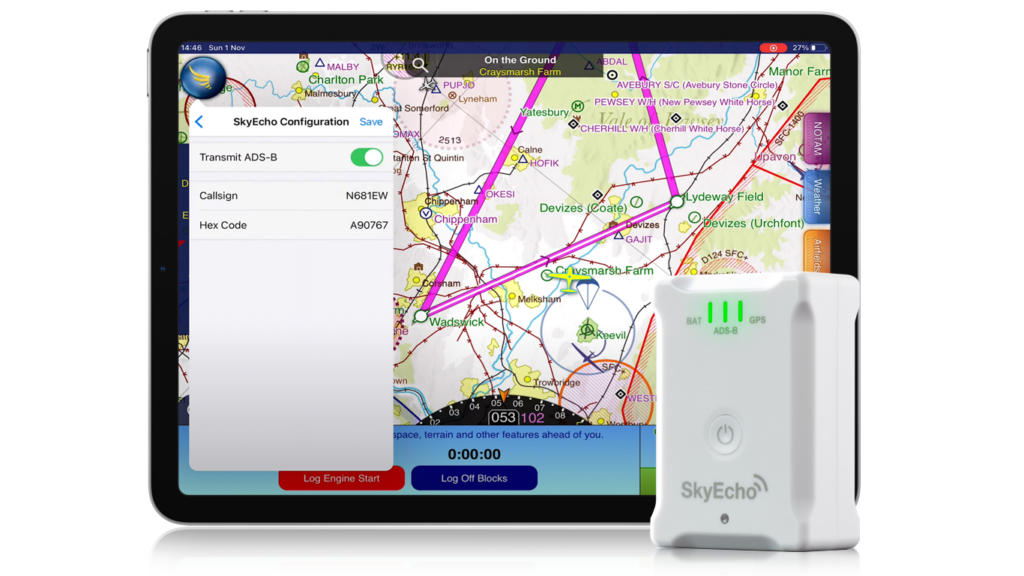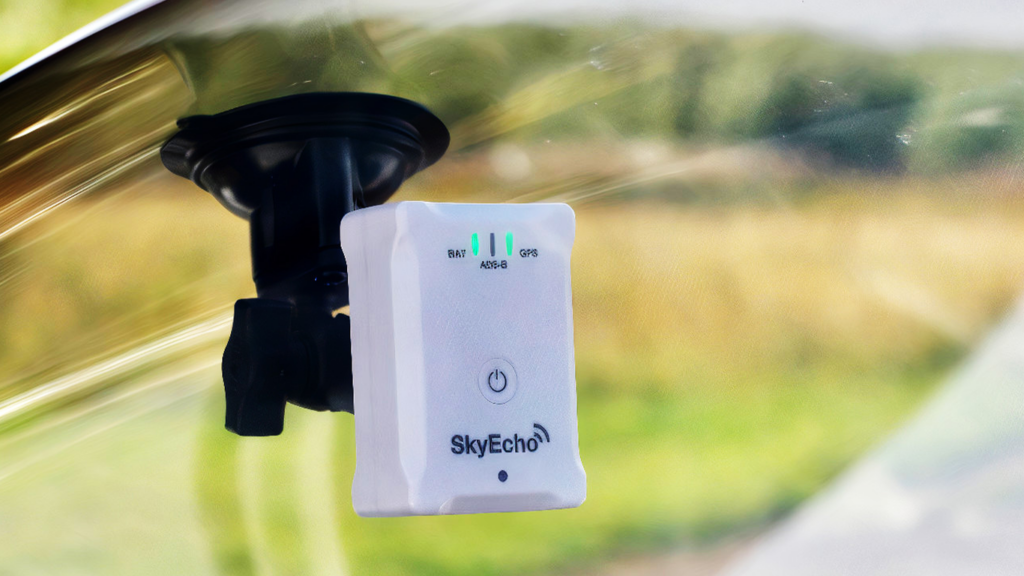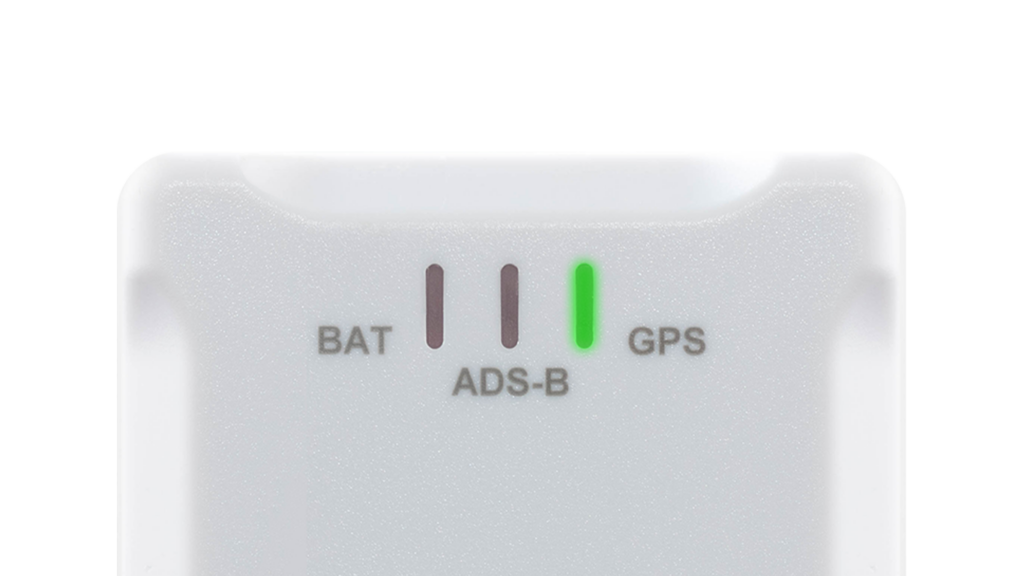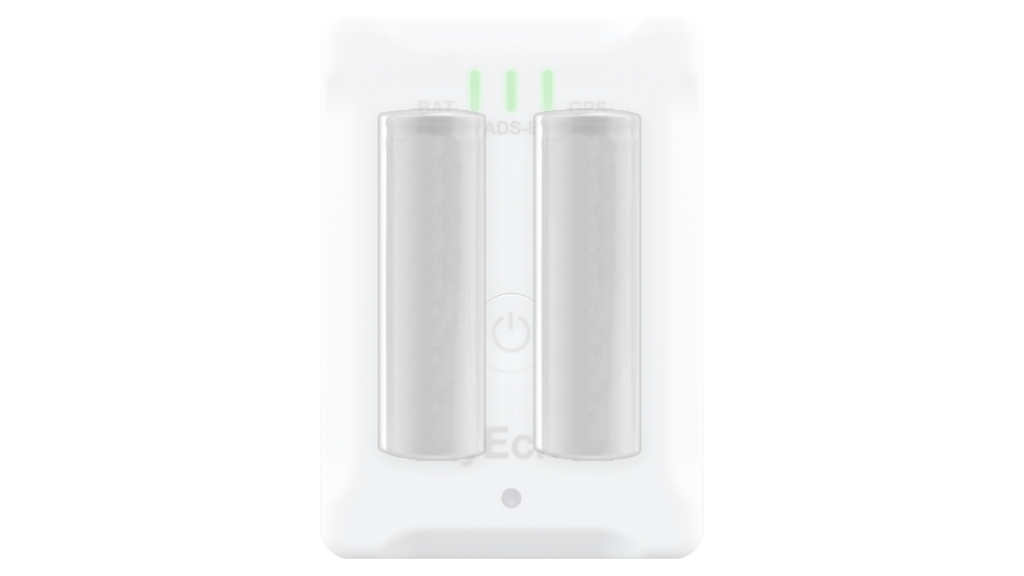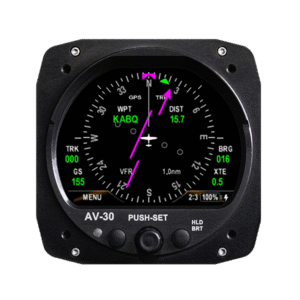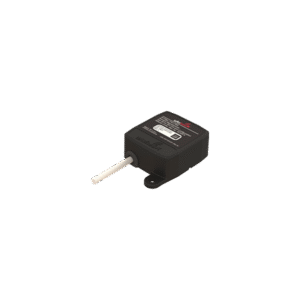Electronic Conspicuity - Portable ADS-B IN & OUT + FLARM
SkyEcho is a compact, portable ADS-B IN/OUT transceiver designed to enhance your visibility and situational awareness in the air. By broadcasting your aircraft’s position, altitude, course, and speed, SkyEcho ensures you’re seen by both ADS-B and FLARM equipped aircraft—greatly improving electronic conspicuity. Approved for use in the UK, Australia, and New Zealand, SkyEcho is a game-changing solution for general aviation pilots seeking a simple, effective way to increase safety and stay compliant in shared airspace.
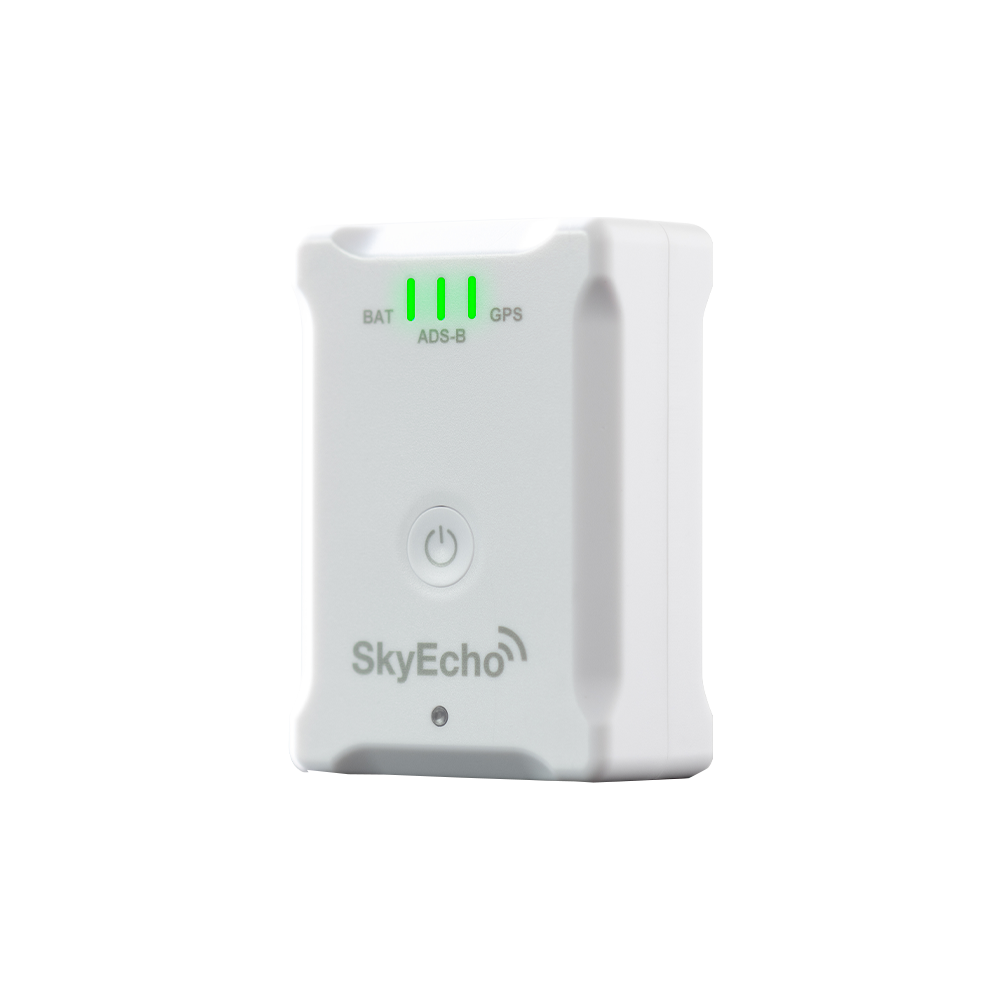
Looking for a Portable Electronic Conspicuity Option in the US?
Primary Features
'See and Be Seen' for Safety and Awareness
Additional Features
Expanded Capability for Confident Flying
Enhanced Safety and Visibility
Approved under UK CAA CAP 1391 and CASA 20:18, it allows light aircraft to be visible without the need for traditional transponders.
Multiple Connection Capabilities
Connects up to 4 devices simultaneously over Wi-Fi, allowing the crew and passengers to view real-time traffic information.
Weather and Traffic Information
Capable of receiving FIS-B and TIS-B information where available, providing comprehensive in-flight data for better decision-making.
Barometric Altimeter Integration
Includes a barometric altimeter that correlates pressure altitude with nearby traffic data for accurate relative altitude awareness.
FLARM Compatibility
SkyEcho can receive and display FLARM traffic information through compatible EFB applications, but only in Europe where FLARM operates on a fixed frequency. This feature is not supported outside of Europe due to regional frequency variations.
Robust and Regulatory Compliant
Meets stringent regulatory requirements and is built to withstand extreme temperatures from -45 to 70°C, ensuring reliable performance under various environmental conditions.
Products
SkyEcho Accessories
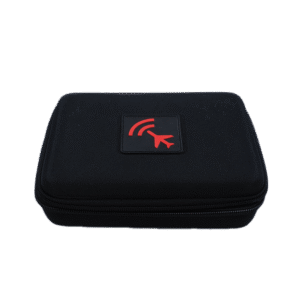
SkyEcho 2 Soft-Shell Case

RAM Suction Cup Mount
Packages
ADS-B and FLARM Traffic Display on Your EFIS
FAQ'S
SkyEcho Knowledge Base
- Aircraft Compatibility
- FAA Requirements
- Installation
- Operation
- Maintenance
- Troubleshooting Tips & Tricks
What types of aircraft can use SkyEcho?
SkyEcho is suitable for light aircraft, gliders, and balloons as approved under UK, Australian & New Zealand regulations.
Is SkyEcho approved for use in the USA?
At this time, SkyEcho is not available for use in the United States, as availability is pending regulatory clearance.
How do I install SkyEcho in my aircraft?
SkyEcho does not require professional installation. It can be mounted using a suction cup on any aircraft window providing a clear view of the sky.
How do I operate SkyEcho with my existing EFB?
Connect SkyEcho via Wi-Fi to your EFB device. It is compatible with any GDL 90 standard protocol EFB application.
What maintenance does SkyEcho require?
SkyEcho is maintenance-free, other than regular charging and firmware updates as recommended by uAvionix.
What should I do if SkyEcho is not transmitting data?
Ensure that it is charged, properly configured via its internal Wi-Fi setup page, and that there are no obstructions blocking its antennas.
Accessories
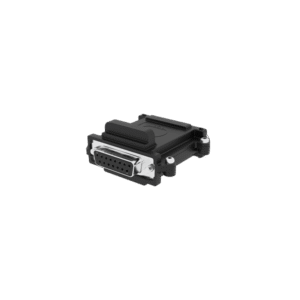
AV-Link PMA

